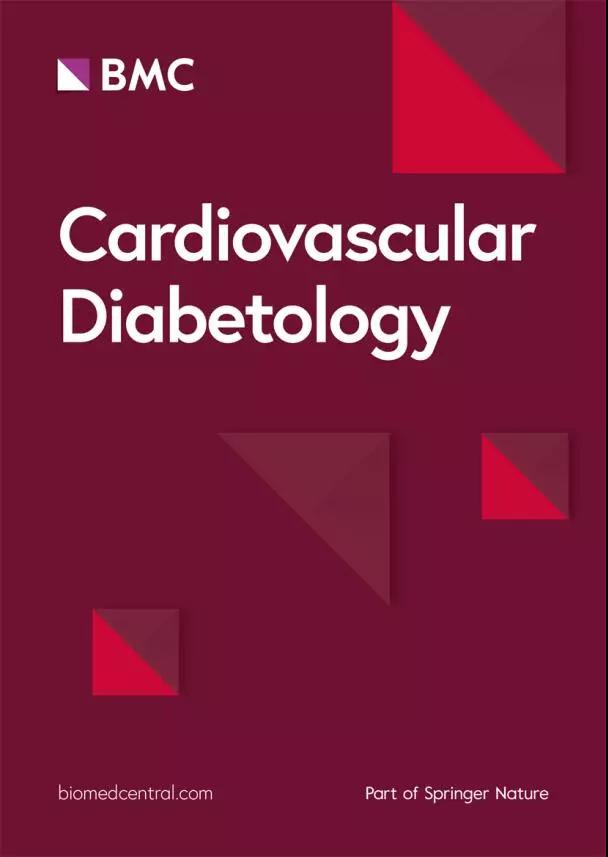血脂异常状态和甘油三酯-葡萄糖指数对糖尿病患者左心室整体功能和心肌微循环的不同影响:一项心脏磁共振研究
IF 8.5
1区 医学
Q1 CARDIAC & CARDIOVASCULAR SYSTEMS
引用次数: 0
摘要
血脂异常状态和甘油三酯-葡萄糖(TyG)指数与心肌损伤之间的关系在2型糖尿病(T2DM)患者中是否存在差异,目前仍不清楚。本研究旨在利用心脏磁共振(CMR)成像确定血脂异常状态和 TyG 指数对 T2DM 患者左心室(LV)整体功能和心肌微循环的不同影响。共有 226 名 T2DM 患者和 72 名对照组患者接受了 CMR 检查。根据有无血脂异常(T2DM(DysL+)和 T2DM(DysL-))或 TyG 指数是否超过 9.06,将 T2DM 组进一步分为若干亚组。对CMR衍生的左心室灌注参数、重塑指数和整体功能指数(GFI)进行评估,并在各组间进行比较。采用多变量线性回归模型评估了各种变量对左心室心肌微循环、重塑指数和GFI的影响。对照组、T2DM(DysL-)组和T2DM(DysL+)组的左心室GFI依次下降(p < 0.001),TyG指数较高的T2DM组低于TyG指数较低的T2DM组(p = 0.003)。TyG指数较高组的左心室重塑指数高于TyG指数较低组(P = 0.002),但在是否伴有血脂异常的亚组中无显著差异。多变量分析显示,TyG指数与左心室重塑指数(β系数[95%置信区间],0.152[0.025, 0.268],P = 0.007)和左心室GFI(- 0.159[- 0.281, - 0.032],P = 0.014)独立相关,而与血脂异常状态无关。在左心室心肌微循环方面,对照组、T2DM(DysL-)组和T2DM(DysL+)组的灌注指数、上斜率和最大信号强度依次下降(均 p < 0.001)。血脂异常状态与灌注指数(- 0.147[- 0.272, - 0.024],p = 0.02)和上斜率(- 0.200[- 0.320, 0.083],p = 0.001)独立相关,而TyG指数与达到最大信号强度的时间独立相关(0.141[0.019, 0.257],p = 0.023)。血脂异常状态和较高的TyG指数都与T2DM背景下左心室整体功能和心肌微血管功能的进一步恶化有关。血脂异常和较高的TyG指数的影响似乎是不同的,这表明不仅血脂和血糖的数量,而且血脂的质量都是防止心肌进一步损伤的治疗目标。本文章由计算机程序翻译,如有差异,请以英文原文为准。
The differential effects of dyslipidemia status and triglyceride-glucose index on left ventricular global function and myocardial microcirculation in diabetic individuals: a cardiac magnetic resonance study
It remains unclear whether the association between dyslipidemia status and triglyceride-glucose (TyG) index with myocardial damage varies in the context of type 2 diabetes mellitus (T2DM). This study aimed to determine the differential effects of dyslipidemia status and TyG index on left ventricular (LV) global function and myocardial microcirculation in patients with T2DM using cardiac magnetic resonance (CMR) imaging. A total of 226 T2DM patients and 72 controls who underwent CMR examination were included. The T2DM group was further categorized into subgroups based on the presence or absence of dyslipidemia (referred to as T2DM (DysL+) and T2DM (DysL-)) or whether the TyG index exceeded 9.06. CMR-derived LV perfusion parameters, remodeling index, and global function index (GFI) were assessed and compared among groups. A multivariable linear regression model was employed to evaluate the effects of various variables on LV myocardial microcirculation, remodeling index, and GFI. The LV GFI sequentially decreased in controls, T2DM (DysL-), and T2DM (DysL+) groups (p < 0.001), and was lower (p = 0.003) in T2DM with higher TyG index group than in lower TyG index group. The LV remodeling index was higher in higher TyG index group than in lower TyG index group (p = 0.002), but there was no significant difference in whether the subgroup was accompanied by dyslipidemia. Multivariable analysis revealed that the TyG index, but not dyslipidemia status, was independently associated with LV remodeling index (β coefficient[95% confidence interval], 0.152[0.025, 0.268], p = 0.007) and LV GFI (− 0.159[− 0.281, − 0.032], p = 0.014). For LV myocardial microcirculation, perfusion index, upslope, and max signal intensity sequentially decreased in controls, T2DM (DysL-), and T2DM (DysL+) groups (all p < 0.001). Dyslipidemia status independently correlated with perfusion index (− 0.147[− 0.272, − 0.024], p = 0.02) and upslope (− 0.200[− 0.320, 0.083], p = 0.001), while TyG index was independently correlated with time to maximum signal intensity (0.141[0.019, 0.257], p = 0.023). Both dyslipidemia status and higher TyG index were associated with further deterioration of LV global function and myocardial microvascular function in the context of T2DM. The effects of dyslipidemia and a higher TyG index appear to be differential, which indicates that not only the amount of blood lipids and glucose but also the quality of blood lipids are therapeutic targets for preventing further myocardial damage.
求助全文
通过发布文献求助,成功后即可免费获取论文全文。
去求助
来源期刊

Cardiovascular Diabetology
医学-内分泌学与代谢
CiteScore
12.30
自引率
15.10%
发文量
240
审稿时长
1 months
期刊介绍:
Cardiovascular Diabetology is a journal that welcomes manuscripts exploring various aspects of the relationship between diabetes, cardiovascular health, and the metabolic syndrome. We invite submissions related to clinical studies, genetic investigations, experimental research, pharmacological studies, epidemiological analyses, and molecular biology research in this field.
 求助内容:
求助内容: 应助结果提醒方式:
应助结果提醒方式:


